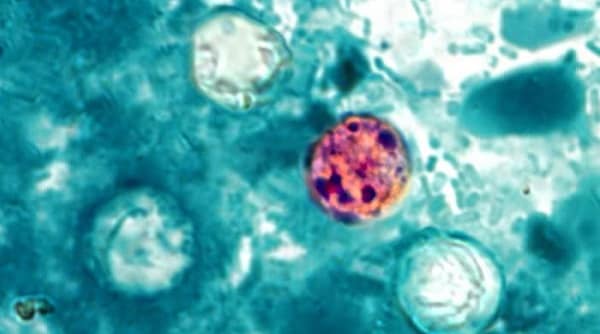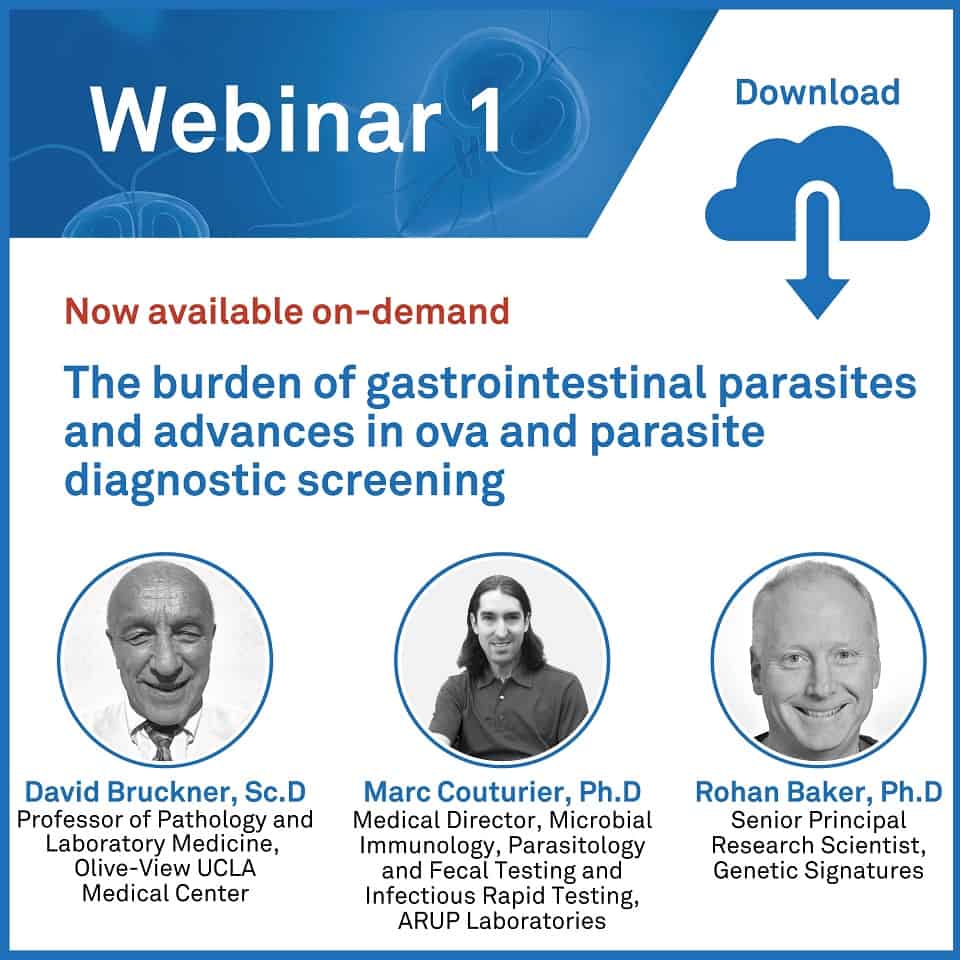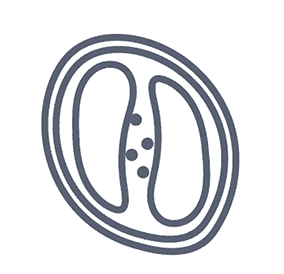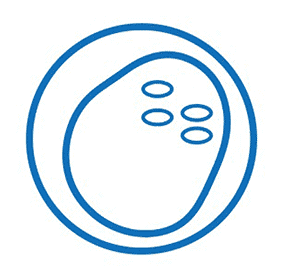Cyclospora laboratory diagnosis
Challenges in diagnosis
Diagnosis of Cyclospora can be difficult in part because patients who are symptomatic might not shed enough oocysts in their stool to be readily detectable by laboratory examinations. Therefore, patients might need to submit several specimens collected on different days.
Cyclospora oocysts may be shed intermittently and at low levels, even by persons with profuse diarrhea. A single negative stool specimen does not exclude the diagnosis; several specimens collected on different days—that are processed and examined with sensitive methods—may be required.
Because testing for Cyclospora is not routinely conducted in most US laboratories, healthcare providers may have to specifically request testing for it, as it cannot be detected with standard microscopy (see below).
Traditional O&P examinations / microscopy
Due to sporadic shedding of Cyclospora oocysts in stool, and low patient compliance with providing multiple stool samples, traditional microscopy often has low test sensitivity of <50%, resulting in misdiagnosis.
Routine wet mount and trichrome staining will not detect this parasite. Microscopic examination requires the ordering and use of sensitive recovery methods (concentration procedures) and modified acid-fast or modified ("hot") safranin techniques that can stain Cyclospora oocysts. Even with this modified staining process, the oocytes are quite variable and may not stain properly, further challenging accurate detection.
Cyclospora oocysts also are autofluorescent, meaning when stool containing the parasite is viewed under an ultraviolet (UV) fluorescence microscope the oocysts appear blue or green against a black background. Molecular diagnostic methods, such as polymerase chain reaction (PCR) analysis, are used to look for the parasite's DNA in the stool.

*Image credit: CDC website - www.cdc.gov/cyclosporiasis/hcp/clinical-overview
C. cayetanensis parasite morphology is usually round with internal sporozoites about 8-10 µm in size.
Molecular methods for detecting C. cayetanensis
Currently, Genetic Signatures EasyScreen™ Gastrointestinal Detection Kit is the only FDA 510(k) cleared molecular diagnostic solution available that can specifically detect C. cayetanensis with 7 other leading gastrointestinal parasites, in the same test.
There are many advantages for employing molecular methods for detecting C. cayetanensis. This includes the ability to screen for 7 other leading gastrointestinal parasites within the one test, supporting accurate and definitive identification of causative agents of parasite-associated gastrointestinal infection.
Syndromic testing for gastrointestinal parasites also supports the identification of unsuspected cases or undiagnosed cases. This is particularly important for patients with variable symptoms.
Unlike Genetic Signatures' EasyScreen™ Gastrointestinal Parasite Detection Kit, not all molecular panels include a target for Cyclospora. Therefore, when evaluating persons with symptoms consistent with cyclosporiasis, specifically request testing for this parasite. If indicated, stool specimens should also be checked for other microbes that can cause a similar illness.
Syndromic testing for 8 gastrointestinal parasites in a single test
Up to 60 patients screened in a single, automated workflow...with same day reporting!

Find out more about our unique 3base™ solution for detecting gastrointestinal parasites
References
- Hiatt RA, Markell EK, Ng E. How many stool examinations are necessary to detect pathogenic intestinal protozoa? The American Journal of Tropical Medicine and Hygiene. 1995 Jul;53(1):36-39. PMID: 7625530.
- CDC. Cyclosporiasis. Clinical Overview of Cyclosporiasis. CDC website - www.cdc.gov/cyclosporiasis/hcp/clinical-overview








